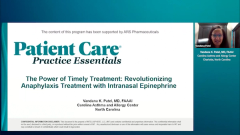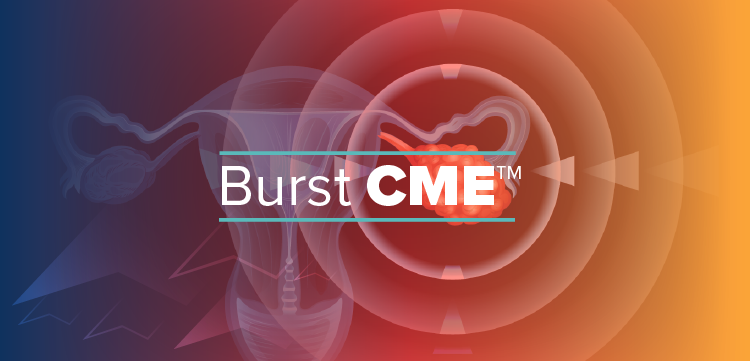
Advancing Anaphylaxis Treatment: The Science Behind Intranasal Epinephrine
A panelist discusses a newly approved intranasal epinephrine device for treating anaphylaxis in both children and adults, highlighting its needle-free delivery using a nasal spray with an absorption enhancer that ensures effective, safe drug uptake comparable to injections—even under nasal congestion—offering a promising alternative to traditional epinephrine autoinjectors.
Episodes in this series

A new intranasal epinephrine device has been introduced as an alternative to traditional injectable forms for treating type 1 allergic reactions, including anaphylaxis. This needle-free option delivers epinephrine via a nasal spray and is approved for both pediatric and adult patients. The pediatric formulation is indicated for children 4 years and older who weigh between 15 and 30 kg, whereas the adult formulation is for those who weigh more than 30 kg. The device uses 3 core components: standard epinephrine, a well-known and trusted medication; a nasal spray mechanism already familiar from other FDA-approved medications like naloxone (Narcan); and an absorption enhancer that improves drug uptake through the nasal mucosa.
This absorption enhancer, a carbohydrate-based compound, plays a critical role in ensuring effective delivery. It temporarily opens tight junctions between cells in the nasal passage, allowing epinephrine to enter the bloodstream efficiently. The design allows for a low-dose delivery that still achieves therapeutic levels without reaching toxic concentrations. In clinical trials, the 2-mg intranasal dose demonstrated peripheral blood levels of epinephrine that fell within a safe and effective range—between those seen with autoinjectors and manually administered intramuscular injections. Additionally, the device was found to perform reliably even under conditions simulating nasal congestion, which is a common concern during allergic reactions.
Regulatory approval required rigorous comparison of this intranasal form with existing standards. The device had to demonstrate not only sufficient drug absorption but also proper physiological effects, such as increased blood pressure and heart rate, akin to injected epinephrine. The data confirmed these effects, meeting the FDA’s pharmacodynamic benchmarks. In summary, this intranasal epinephrine option could represent a significant advancement in anaphylaxis care, addressing patient concerns about injections while maintaining the efficacy required for emergency treatment.
Newsletter
Enhance your clinical practice with the Patient Care newsletter, offering the latest evidence-based guidelines, diagnostic insights, and treatment strategies for primary care physicians.





























































































































































































































































































